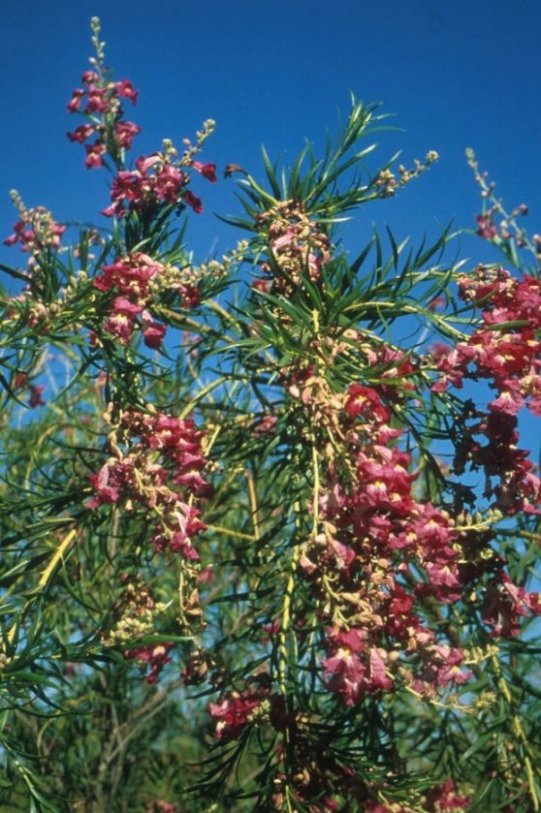| Botanical Name: Chilopsis linearis 'Lucretia Hamilton' | |
| Common Name: Lucretia Hamilton Desert Willow |

-
Anatomy
-
Culture
-
Design
Plant Type
Tree, Shrub
Height Range
12-25'
Flower Color
Purple, Violet
Flower Season
Spring, Summer
Leaf Color
Green
Bark Color
Brown, Green
Fruit Color
Brown
Fruit Season
Winter, Fall
Sun
Full
Water
Low
Growth Rate
Moderate
Soil Type
Sandy, Clay, Loam, Rocky, Unparticular
Soil Condition
Average, Poor, Well-drained, Dry
Soil pH
Neutral, Basic
Adverse Factors
Attracts Bees
Design Styles
Meadow, Mediterranean, Ranch, Spanish
Accenting Features
Multi-trunk Tree, Showy Flowers, Silhouette, Specimen
Seasonal Interest
Spring, Summer
Location Uses
Background, Shrub Border, Foundation, Patio, Walls / Fences
Special Uses
Screen, Wind Break, Fire Resistant, Naturalizing, Small Spaces
Attracts Wildlife
Hummingbirds
Information by: Stephanie Duer
Photographer: Mountain States Nursery
Photographer: Mountain States Nursery
-
Description
-
Notes
'Lucretia Hamilton' is the perfect desert willow for attracting hummingbirds to patios and small yards. A naturally compact grower, this selection provides a long blooming summer display of stunning burgundy flowers. And during the winter and early spring, its finely textured branching makes an especially nice focal point when planted against walls and fences. (Miss Lucretia stays smaller in zone 6 climates hence the significant variation in mature height and spread.) Selected by Ron Gass of Mountain States Nursery. 12 to 18 feet tall and wide.
Grow in full sun in well-drained, loose soils; cannot tolerate overwatering. Cold hardy to -15F once established, but may experience some die-back in particularly hard winters or as it establishes. It does, however, thrive with reflective winter heat, so siting it against a south, west, or even east facing wall can help it over-winter. Flowers on new wood and so pruning, if necessary, ought to occur afterwards. It is quite xeric and requires no supplemental watering after establishment; however, a monthly soak will encourage better flowering.